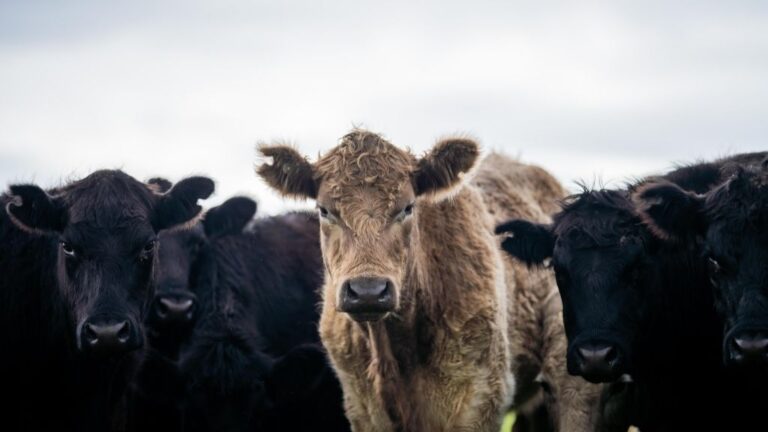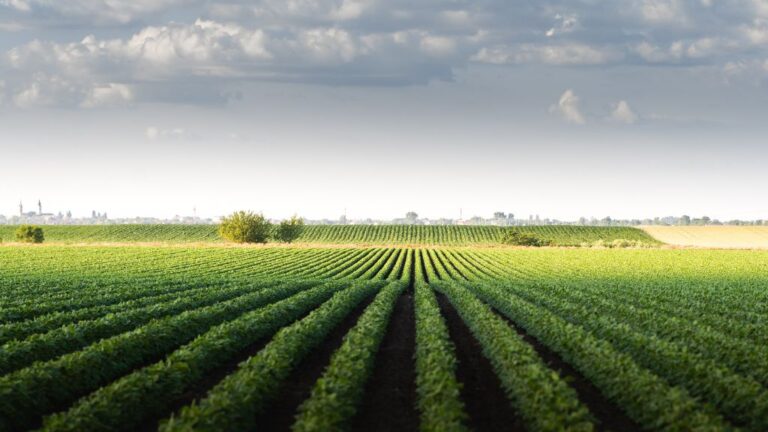As a food systems researcher, I’m deeply invested in transforming food and farming practices to work better for everyone. My recent food systems manifesto outlines key priorities—from sustainable farming to healthy food environments. But underlying all of these is a more fundamental need: to ensure access to adequate, nutritious food as a basic right. This article shares what I’ve been learning about how establishing a right to food in UK law could provide the foundation we need here for meaningful food system change.

What exactly is a “right to food”?
A right to food makes access to adequate food a legal entitlement. This would mean the government has to consider the impact on food access when making decisions about everything from benefit levels to planning regulations.
Establishing a right to food also acknowledges that food security is a collective responsibility rather than treating it as an issue for individuals to manage.
When we talk about a right to food, it’s also easy to imagine this simply means ensuring nobody goes hungry. But it’s so much more than that. A right to food means everyone should be able to access adequate, nutritious, culturally appropriate food with dignity, either by growing it, buying it, or receiving support when needed.
We could be forgiven for thinking that something so fundamental as a right to food was already in place in the UK. Yet while we have already committed to food security in principle under the International Covenant on Economic, Social and Cultural Rights (ICESCR), it remains unfulfilled without domestic legal backing. Without this legal foundation, food security persists as a matter of policy discretion rather than an obligation—leaving millions vulnerable.
What are the results of our current approach?
Food hardship is increasingly evident across the country, and national data show just how big the problem has become. Despite being one of the wealthiest countries in the world, the UK faces rising food insecurity. An estimated 15% of households—11 million adults and children—don’t have reliable access to sufficient, affordable, nutritious food. The overall rate of food insecurity is now twice that of 2021. Meanwhile, food bank use has skyrocketed, with the Trussell Trust alone providing over 3 million emergency food parcels in 2023/24—almost double the number compared to five years earlier and the most ever in a single year.
But these figures, shocking as they are, only hint at the deeper problem. Our current approach treats food insecurity primarily as a social welfare issue, addressed through a patchwork of policies and increasing reliance on charitable initiatives. Free school meals, Healthy Start vouchers, and emergency food aid—primarily food banks—all play vital roles. Yet they operate in isolation, dealing with symptoms rather than causes.
Tackling the deeper issue
As I’ve researched both the symptoms and underlying causes of food insecurity, one issue stands out as fundamental: the growing gap between incomes and food costs. The most deprived fifth of UK households would need to spend 50% of their disposable income to afford a healthy diet in line with government guidelines. When faced with rising costs for housing, energy, and other essentials, food often becomes the flexible item in household budgets—people eat less or switch to cheaper, often less nutritious options.
This isn’t about individual choices, a failure of individual responsibility, or the need for charitable generosity. It’s about system failure and collective responsibility. And it’s why we need a more fundamental shift in approaching food security and a right to food.
What could a right to food look like in practice in the UK?
I’ve previously highlighted how fragmented governance often leads to disconnected policy solutions. Through my involvement with the Food Ethics Council, I’ve seen how a right to food offers an opportunity to break this pattern. Alongside this, I recently explored Scotland’s approach to food policy, which takes an important step forward in demonstrating how this might work. Their Good Food Nation Act incorporates a rights-based perspective into food policy (albeit not a right to food per se) that requires government to create regular food plans with measurable goals, and establishes an independent food commission to monitor progress.
Scotland’s proposed Human Rights Bill would go further, aiming to embed the right to food within human rights law by integrating international treaties, including the ICESCR, directly into Scottish law. Although it was dropped from the government’s agenda, this dual approach shows how combining systemic food policy reform with fundamental legal protections in the UK could foster accountability and drive meaningful progress towards food security.
First, it would require government at both devolved and central levels to ensure that wages and benefits are sufficient to meet the real cost of a healthy diet. Millions of UK households fall short of this basic standard—a right to food would make this gap impossible to ignore. Moreover, it would consider the needs of people with no recourse to public funds—another critical issue that won’t be resolved by addressing the wages and benefits gap.
Second, it would transform how we approach policy decisions with more joined-up governance across agriculture, health, environment, and social policy. A right to food would require this kind of integrated thinking—from planning regulations that prevent “food deserts” to procurement policies prioritizing nutrition in schools and hospitals. Agricultural policy would need to balance environmental goals with ensuring sustainable domestic food production.
Third, and most importantly, it would shift accountability. Rather than relying on charities to fill gaps in provision, government would have a legal duty to ensure everyone can access adequate food. This doesn’t mean the state providing all food directly—rather, it means creating conditions where everyone can meet their food needs with dignity, whether through fairly paid work, growing their own food, or receiving support when necessary.
The challenges shouldn’t be understated. Implementing a right to food would require significant policy changes and resources. But the cost of not acting is greater: poor health outcomes, reduced educational attainment, and lost potential. With Scotland offering leadership and inspiration, we have an opportunity to learn from their experience and create a more resilient and equitable food system across the UK.
Making the right to food real
Food insecurity in the UK isn’t inevitable—it’s the result of policy choices. Our current approach consists of fragmented policies and reliance on charity, which only addresses the symptoms of food insecurity, not the causes.
A right to food, embedded in law, would require government to prioritize food security across policy decisions, ensuring that food access is considered as critical as housing, healthcare, and education.
Scotland’s Good Food Nation Act, and efforts to embed a right to food through a Human Rights Bill shows this isn’t just an idealistic vision—it’s an achievable goal with practical implications for how we approach policy across government. As we face ongoing challenges with the cost of living, climate change, and public health, we need this kind of systemic change more than ever.
There’s no doubt that everyone should have reliable access to adequate, nutritious food. The question is whether we’re ready to take the steps needed to make it a reality.
The movement for a right to food in the UK is growing. Learn more and get involved:
– The Food Ethics Council has compiled resources and analysis on implementing a right to food in the UK. Watch their short explainer webinar on the fundamentals of the right to food.
– Just Fair conduct research and campaign on food as a fundamental human right.
– Nourish Scotland and the Scottish Human Rights Commission have been leading the initiative to embed a right to food in Scots Law.
I write about the future of food and the connections between our food systems, the environment and public health. Sign up for my newsletter.
You can also read more here.






